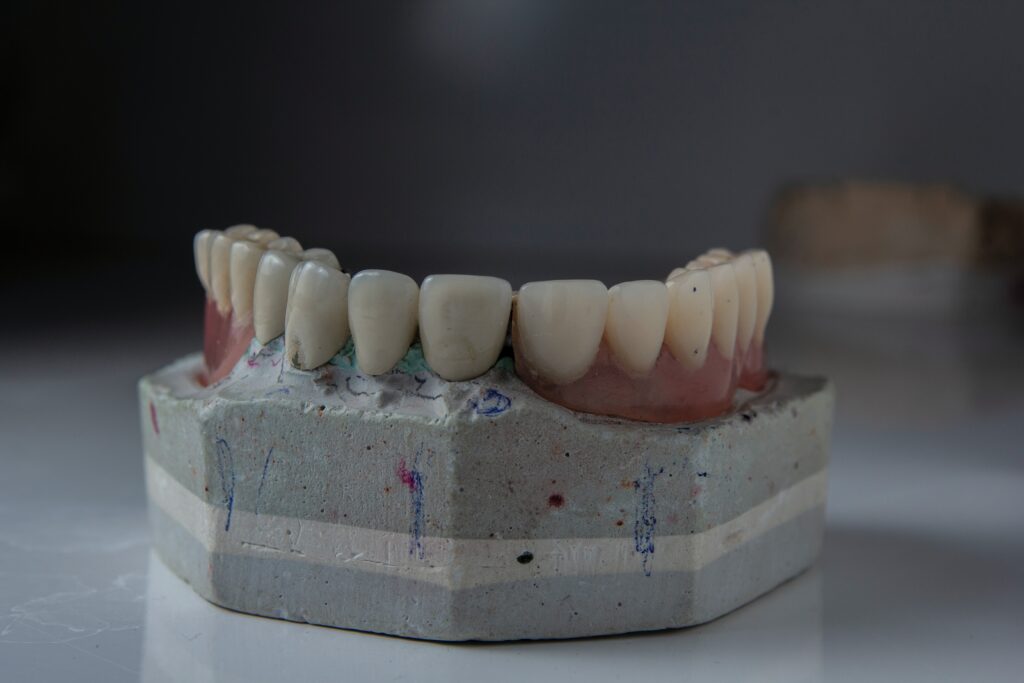
If you’re experiencing dental pain or have been advised by your dentist, you may be wondering about root canal treatment. This section will provide you with an understanding of what a root canal is, when it is needed, and the importance of undergoing this procedure.
A root canal is a dental procedure performed to save a severely damaged or infected tooth. Inside each tooth, beneath the hard outer layer called the enamel, lies a soft tissue called the pulp. The pulp contains nerves, blood vessels, and connective tissue that help the tooth grow during development. However, once a tooth is fully formed, it can survive without the pulp.
During a root canal procedure, the dentist removes the infected or damaged pulp, cleans and disinfects the tooth’s interior, and then seals it to prevent further infection. By preserving the natural tooth structure, a root canal can alleviate pain and restore the tooth’s functionality.
A root canal is typically needed when the pulp becomes infected or inflamed due to deep decay, repeated dental procedures on the same tooth, a cracked or chipped tooth, or trauma to the tooth. Signs that you may require a root canal include persistent toothache, sensitivity to hot or cold temperatures, swelling, and a darkening of the tooth. However, only a dental professional can accurately diagnose whether a root canal is necessary.
Undergoing a root canal is crucial for several reasons. Firstly, it allows you to preserve your natural tooth, which is always preferable to extraction. Keeping your natural teeth helps maintain proper chewing function and prevents the surrounding teeth from shifting out of position.
Secondly, a root canal eliminates the pain and discomfort associated with an infected or damaged tooth. By removing the infected pulp, the source of the pain is eliminated, and the tooth can be restored to a healthy state.
Lastly, a root canal can prevent the spread of infection to the surrounding tissues and jawbone. If left untreated, the infection can lead to more serious dental issues and even systemic health problems.
Now that you have a better understanding of what a root canal is, when it is needed, and why it is important, you can make informed decisions about your dental health. If you’re interested in learning more about the root canal procedure itself, check out our article on root canal treatment. Remember to consult with your dentist for an accurate diagnosis and personalized treatment plan.

Photo by Ozkan Guner on Unsplash
When considering root canal treatment, it’s important to understand the factors that can influence the cost of the procedure. Several key factors can affect the overall cost of a root canal, including location and dental practice, complexity of the procedure, and the need for additional procedures and materials.
The location of the dental practice can have a significant impact on the cost of a root canal. Dental fees can vary depending on the region, with urban areas typically having higher costs compared to rural areas. For example, root canal costs in Sydney may differ from those in Melbourne or Perth. It’s important to research and compare prices from different dental practices in your area to find the most affordable option that meets your needs. You can find more information on root canal costs in specific locations in our article on root canal cost Australia.
The complexity of the root canal procedure can also influence the cost. The number of canals in the affected tooth, the position of the tooth in the mouth, and the severity of the infection or damage can all contribute to the complexity of the procedure. Complex cases may require more time and expertise, which can result in higher costs. Your dentist will evaluate your specific situation and provide a detailed treatment plan along with an estimate of the associated costs.
In some cases, additional procedures and materials may be necessary during a root canal treatment. For instance, if the tooth has extensive decay or damage, it may require a post and core restoration or a dental crown to restore its strength and appearance. These additional procedures and materials can increase the overall cost of the treatment. Your dentist will discuss any necessary additional procedures and their associated costs as part of your treatment plan.
Understanding the factors that affect root canal costs can help you make informed decisions about your dental care. It’s important to consult with a dental professional to assess your specific case, determine the complexity of the procedure, and obtain an accurate estimate of the costs involved. Keep in mind that while cost is an important consideration, it’s equally crucial to prioritize the quality of care and the expertise of the dental practice.
When considering root canal treatment, it’s important to have an understanding of the average costs associated with this procedure. The cost of a root canal can vary depending on several factors, including the complexity of the case and the location of the dental practice.
The cost of a root canal treatment typically includes several components. These may include:
The total cost of the procedure will depend on the complexity of the case and the materials used for the restoration. It’s important to consult with your dentist to get a customized cost estimate based on your specific situation.
The cost of root canal treatment can vary significantly depending on the location of the dental practice. Factors such as the local cost of living, overhead expenses, and competition within the area can influence the pricing.
In general, root canal treatment tends to be more expensive in larger cities and metropolitan areas compared to rural locations. For example, the cost of a root canal in Sydney may differ from the cost in Melbourne or Perth. It’s advisable to research the average costs specific to your area to get a better understanding of what to expect. For more information on root canal costs in different locations, you can visit our article on root canal cost Australia.
Insurance coverage for root canal treatment varies depending on the dental insurance plan you have. Some insurance plans may cover a significant portion of the cost, while others may cover only a portion or not cover it at all. It’s essential to review your insurance policy or consult with your insurance provider to understand the extent of coverage for root canal procedures.
If you don’t have dental insurance, you may want to consider dental discount plans or dental savings plans, which can provide reduced fees for various dental procedures, including root canal treatment. Additionally, some dental clinics may offer in-house financing or payment plans to help make the cost more manageable. It’s worth exploring these options to find the most affordable route for your root canal treatment.
Understanding the average costs and factors that influence the cost of root canal treatment is essential when planning for this dental procedure. By researching dental clinics, exploring payment options, and seeking dental assistance programs, you can find affordable options that meet your needs. Remember, maintaining oral health on a budget is crucial, and regular dental check-ups along with proper oral hygiene practices can help prevent the need for extensive dental treatments like root canals.
If you’re in need of a root canal but are concerned about the associated costs, there are several strategies you can employ to find affordable treatment options. Here are some tips to help you navigate the process:
Start by researching dental clinics in your area that offer root canal treatment. Look for clinics that are known for providing quality care at reasonable prices. Read patient reviews and testimonials to get an idea of their expertise and customer satisfaction. Additionally, consider visiting websites that provide information on root canal costs to compare prices and find the best option for you. Internal links like root canal cost can provide valuable information in this regard.
To make root canal treatment more affordable, explore different payment options available at dental clinics. Many clinics offer flexible payment plans that allow you to pay for the treatment in installments over time. This can alleviate the financial burden and make the cost more manageable. Additionally, inquire about any insurance coverage for root canals that you may have. Understanding your insurance benefits and coverage can help reduce out-of-pocket expenses. Internal links like insurance coverage for root canals can provide further insights.
In some cases, dental assistance programs may be available to help individuals with limited financial resources access necessary dental care, including root canal treatment. Research local dental assistance programs in your area and determine if you meet their eligibility criteria. These programs can provide financial support or connect you with affordable dental clinics that offer discounted rates for certain procedures. Internal links like dental assistance programs can provide useful information on this topic.
By following these tips, you can increase your chances of finding affordable root canal treatment. Remember to balance cost considerations with the quality of care provided to ensure the best possible outcome for your dental health.
When it comes to oral health, prevention is key. Taking proactive steps to maintain good oral hygiene can help you avoid costly dental procedures like root canal treatments. Here are some preventive measures you can take to keep your teeth healthy and minimize the need for root canals:
Brush and floss regularly: Brush your teeth at least twice a day with a fluoride toothpaste and floss daily. Proper brushing and flossing help remove plaque and bacteria, reducing the risk of tooth decay and gum disease.
Follow a balanced diet: A nutritious diet plays a crucial role in maintaining oral health. Limit sugary and acidic foods and drinks, as they can contribute to tooth decay. Instead, opt for a diet rich in fruits, vegetables, and dairy products for stronger teeth.
Use fluoride products: Fluoride helps strengthen tooth enamel and prevent tooth decay. Use fluoride toothpaste and consider using a fluoride mouthwash as part of your oral care routine.
Protect your teeth: If you engage in contact sports or activities that may pose a risk to your teeth, wear a mouthguard to prevent dental injuries. Avoid using your teeth as tools to open bottles or packages, as this can lead to cracks or fractures.
Regular dental check-ups are essential for maintaining good oral health, even on a budget. By visiting your dentist at least twice a year, you can catch any potential issues early on, preventing them from progressing to the point where a root canal might be necessary. During these check-ups, your dentist will examine your teeth, perform professional cleanings, and provide guidance on maintaining oral health.
In addition to preventive measures and regular dental check-ups, adopting good oral hygiene practices can help keep your teeth in optimal condition. Here are some best practices to follow:
Replace your toothbrush regularly: Replace your toothbrush every three to four months or sooner if the bristles become frayed. A worn-out toothbrush is less effective at removing plaque and bacteria.
Clean your tongue: Use a tongue scraper or your toothbrush to gently clean your tongue. This helps remove bacteria that can contribute to bad breath and oral health problems.
Rinse with mouthwash: Incorporate a mouthwash into your dental routine to freshen your breath and kill bacteria that brushing and flossing may have missed.
Avoid tobacco and excessive alcohol consumption: Tobacco use and heavy alcohol consumption can increase the risk of gum disease and oral cancer. Quitting smoking and drinking in moderation can greatly improve your oral health.
By following these preventive measures, scheduling regular dental check-ups, and practicing good oral hygiene, you can maintain your oral health on a budget and reduce the likelihood of needing expensive dental procedures like root canals. Remember that prevention is always better than cure when it comes to your oral health.